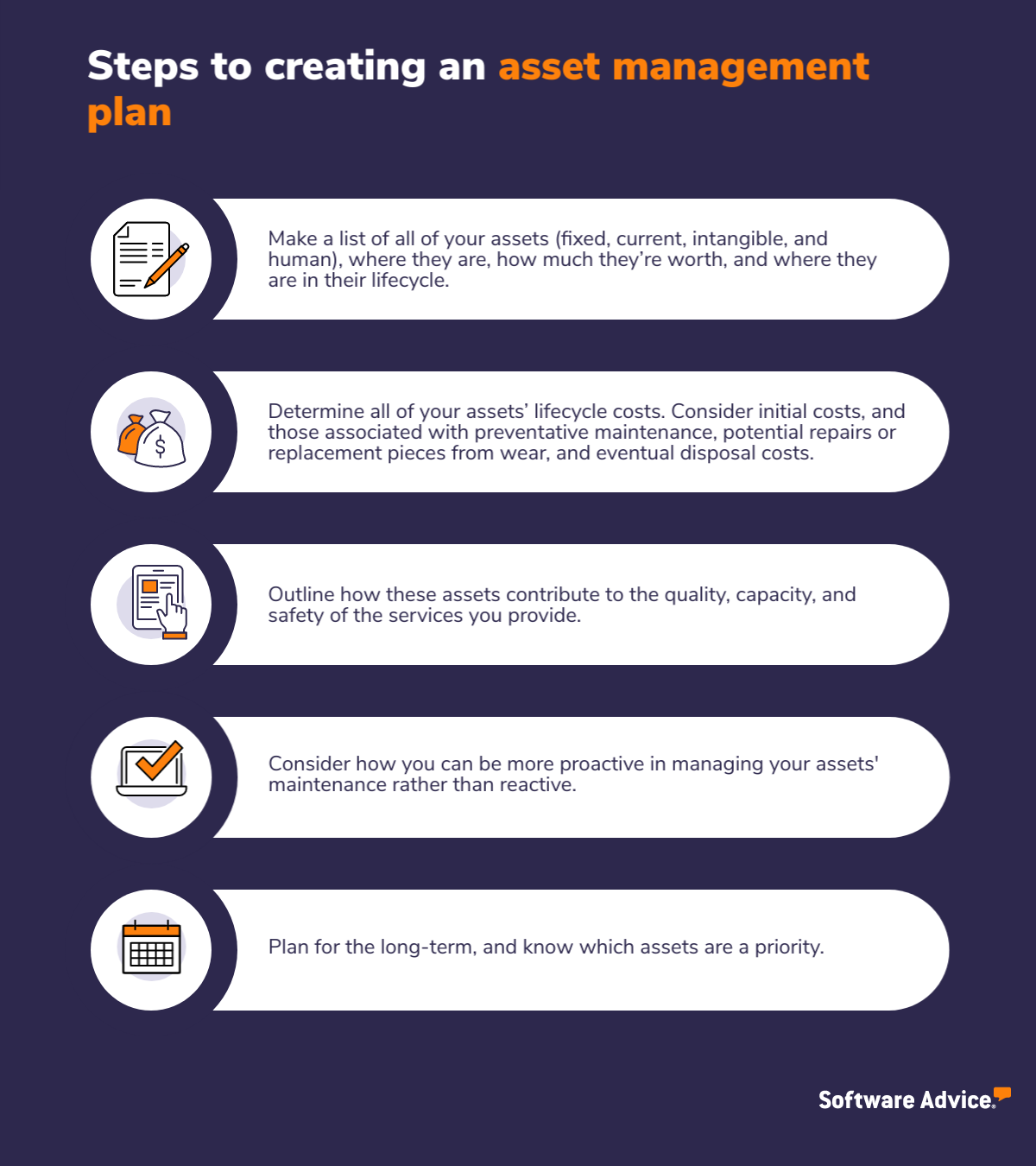5 Construction Asset Management Strategies for Small Firms
As a business leader or project manager in the construction industry, you understand that protecting your small construction business's assets means protecting your business.
But you might be struggling with managing your numerous on- and off-site assets, which can waste time and money, hurt your bottom-line, and stunt your business's growth.
Employing the right strategies, however, can turn this around and help you gain control over your assets and construction business’s future.
What is asset management in construction?
Asset management in construction means strategically planning, coordinating, and acting in a way that ensures assets are efficiently used, maintained, and disposed of.
Kyle Leman [1]
Owner of Crossroads Foundation Repair
Types of assets in construction
When creating an effective asset management strategy, be sure to account for all of your assets. Here are four asset categories to not overlook:
Fixed assets that may be immovable or not easily moved such as land, buildings, large machinery, and vehicles. Consider both what you own and what you lease or rent.
Current assets that you may have now but are frequently liquidated, such as inventory or raw materials used for construction projects.
Intangible assets such as your construction project management software, building information modeling (BIM) software, other software platforms, licenses, patents, and your brand’s reputation.
And, of course, your human assets who comprise your skilled workforce and whose expertise is invaluable to your business.
Construction asset management strategies to protect your business
We spoke with several construction industry professionals about how they approach asset management, and here are five strategies that work for them.
1. Create an asset management plan
Whether you're creating a new strategy or adjusting an existing one, it can easily become an overwhelming process. This is why taking the time to create a plan from the beginning can help you.
When creating an asset management plan, the following steps are good to keep in mind:

By creating an asset management plan, you can stay focused and make sure all of your assets are accounted for.
Shaun Martin [2]
Owner and CEO of We Buy Houses In Denver
2. Keep track of your assets
You can’t manage your assets if you don’t know where they are both physically and in their lifecycles.
Asset tracking software, for example, can help you schedule asset maintenance, set up alerts, automatically assign new work orders to appropriate people, track the lifecycles of assets, run reports, and calculate depreciation of machinery.
It can also help you keep track of construction equipment that employees check in and out to ensure all of your construction assets are where they need to be.
Kyle Leman
3. Perform regular maintenance checks
Preventative maintenance is a critical part of asset management that will help you avoid challenges in the future.
Performing maintenance checks on fixed assets, such as heavy equipment, can be a good time to evaluate the asset’s lifecycle and make informed decisions for buying, leasing, or replacing construction equipment.
For your intangible assets such as software, make sure they’re updated to their latest version so they run smoothly and reduce any vulnerabilities to cyberthreats.
Shaun Martin
4. Educate and train your employees
As you’re maintaining your fixed, current, and intangible assets, don’t forget about the true force behind your business: your employees.
Like with any asset, your workforce also needs maintenance. This might look like education opportunities, upskilling workshops that train them how to use new equipment and tools, and training sessions to refresh their memories of how to use and care for construction equipment.
Roman Smolevskiy [3]
Owner of A+ Construction & Remodeling
5. Regularly re-evaluate your asset management strategy
In today’s fast-paced digital environment, no strategy will be effective forever. As technology changes and the construction industry evolves, so too will your company’s equipment, assets, and priorities.
For example, your company may decide to invest in new technologies such as drones or 3D printing equipment. These new technologies may need a different asset management strategy than your older equipment.
They may also need different levels of support from your intangible assets, such as software. As you invest in new equipment and technologies, you may have to invest in different platforms, such as BIM software or cybersecurity software, to keep your business running smoothly and securely. Set aside time once or twice a year to review your asset management strategy and make sure new equipment is added, discarded equipment is removed or archived, lifecycle information is up to date, and that your approach remains both relevant and robust.
Shaun Martin
Let software help you reach your asset management goals
Asset management is critical to your business’s long-term success to keep track of the equipment, tools, and people making the services you offer to clients possible. But on top of all of your responsibilities, asset management might at times slip further and further down your to-do list.
This is where software comes in. By scheduling asset maintenance, tracking assets, setting reminders, assigning asset management tasks, and tracking lifecycles and depreciation of assets, the right platform can help you reach your asset management goals.
If your asset management strategy is in need of a digital boost, consider investing in enterprise asset management (EAM) software or construction software with asset tracking capabilities.
Consider software an ally when it comes to managing your small construction firm’s assets.